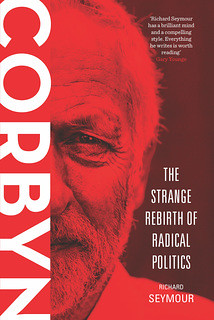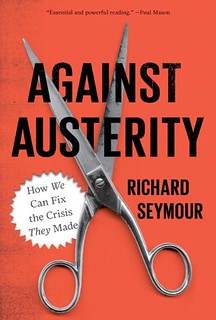Thursday, February 10, 2011
Gramsci on the Southern Question posted by Richard Seymour
By introducing workers' control over industry, the proletariat will orient industry to the production of agricultural machinery for the peasants, clothing and footwear for the peasants, electrical lighting for the peasants, and will prevent industry and the banks from exploiting the peasants and subjecting them as slaves to the strongrooms. By smashing the factory autocracy, by smashing the oppressive apparatus of the capitalist State and setting up a workers' State that will subject the capitalists to the law of useful labour, the workers will smash all the chains that bind the peasant to his poverty and desperation. By setting up a workers' dictatorship and taking over the industries and banks, the proletariat will swing the enormous weight of the State bureaucracy behind the peasants in their struggle against the landowners, against the elements and against poverty. The proletariat will provide the peasants with credit, set up cooperatives, guarantee security of person and property against looters and carry out public works of reclamation and irrigation. It will do all this because an increase in agricultural production is in its interests; because to win and keep the solidarity of the peasants is in its interests; because it is in its interests to orient industrial production to work which will promote peace and brotherhood between town and countryside, between North and South.
The argument is thus one about hegemony, and revolutionary strategy. For the sake of clarity, I'll outline what I understand by Gramsci's conception of hegemony. Hegemony is political class leadership, in two senses: 1) leadership within a class alliance, either bourgeois or proletarian; 2) dominance over other classes. For the purposes of communist struggle, the working class seeks to take leadership of (hegemonise) an alliance of subaltern classes. It does this principally through the exertion of consensual power, negotiating between the classes, making the case for a mutually beneficial alliance with the working strategically in the forefront. This does not mean manipulatively taking up certain slogans to temporarily coopt other classes or class fractions, but actively modifying the perspective of the would-be hegemonic class itself so that it internalises parts of the perspective of subaltern groups. It is through this process that the working class ceases to be fighting a sectional battle and becomes a universal class. Yet its ability to do so depends on its ability to use coercion, to coordinate the struggle against and finally domination over the opposing classes. Previously dominant interpretations of Gramsci's argument assumed that he opposed hegemony to coercion in the form of a 'dictatorship of the proletariat', thus providing the basis for left social democratic and, later, Eurocommunist strategies for struggles against the Right. The argument runs that in Gramsci, the proper terrain for hegemonic struggles is in civil society, while the state is the zone of authority and coercion. Thus, hegemonic struggles must take place below the surface Peter Thomas' The Gramscian Moment shows that these interpretations misleadingly ignore key aspects of Gramsci's exposition, wherein he maintains that coercion and consent are different moments in a unitary political process: consensual power is exerted within the subaltern class alliance that seeks to assume leadership of society; coercive power is exerted over the defeated, previously ruling, classes once leadership is attained.
So, the Southern Question is one of how the proletariat can assume hegemony within a "system of class alliances" enabling "the majority of the working population" to take on capitalism, and then assert a dictatorship of the proletariat. It takes the form of the Southern Question because of the particular patterns of capital accumulation which emerge after unification, with the northern bourgeosie the hegemonic force in an historic bloc with southern landlords based on protectionism. The costs of the industrialisation project, undertaken to speed up growth and pay off massive debts incurred during the wars of unification, were borne overwhelmingly by the agrarian poor who had to pay heavy taxes to sustain development. Investments tended overwhelmingly to benefit the north, whose elites dominated in the state and in the great banks that started to develop at the turn of the century. Heavy industry was concentrated in the northern triangle of Turin, Milan and Genoa. Elsewhere, even in the north, industry remained underdeveloped. Most workers operated as artisanal producers or in small factories, and many were peasants sucked into the cities by the disparity of wealth. Their labour was largely precarious. This uneven relationship effectively forced the south and the islands into a position of colonial dependency. Bourgeois hegemony was thus consolidated in part through the colonial ideology known as 'Southernism', propagated both by the bourgeoisie and by reformist socialists: "the South is the ball and chain which prevents the social development of Italy from progressing more rapidly; the Southerners are biologically inferior beings, semi-barbarians or total barbarians, by natural destiny; if the South is backward, the fault does not lie with the capitalist system or with any other historical cause, but with Nature, which has made the Southerners lazy, incapable, criminal and barbaric".
If the working class is to effectively free itself, it must break with these prejudices. These were ideas which Gramsci had himself encountered among the most advanced sectors of the working class in Turin, and which the communists had placed a premium on combatting, to the extent of seeking an alliance with the radical, but sectarian, peasants' leader Gaetano Salvemini. But in addition, the communists in the south had to counteract tendencies toward regional solidarity between peasants and the gentry, and pose the question very concretely of whether they would support a class that has ruined them or a class that is their legitimate ally. This is precisely the sort of hegemonic struggle that is described in formal language above, as Gramsci goes on to make clear:
The proletariat, in order to become capable as a class of governing, must strip itself of every residue of corporatism, every syndicalist prejudice and incrustation. What does this mean? That, in addition to the need to overcome the distinctions which exist between one trade and another, it is necessary - in order to win the trust and consent of the peasants and of some semiproletarian urban categories - to overcome certain prejudices and conquer certain forms of egoism which can and do subsist within the working class as such, even when craft particularism has disappeared. The metalworker, the joiner, the building-worker, etc., must not only think as proletarians, and no longer as metal-worker, joiner, building-worker, etc.; they must also take a further step. They must think as workers who are members of a class which aims to lead the peasants and intellectuals. Of a class which can win and build socialism only if it is aided and followed by the great majority of these social strata. If this is not achieved, the proletariat does not become the leading class; and these strata (which in Italy represent the majority of the population), remaining under bourgeois leadership, enable the State to resist the proletarian assault and wear it down.
Born in Sardinia, Gramsci was always acutely sensitive to the centrality of regional and cultural cleavages which cut across class lines. Alongside the question of the Vatican, he maintained that the Southern Question was one of the most important issues for the prospects for successful revolution. When he launched the communists' paper L'Unita, he chose the title because of the centrality of the South. Gramsci was no doubt attuned to the debates on the shared interests of the peasantry and the workers which had arisen from the marxist split from Russian populism, debates which had animated Plekhanov, Kautsky and Lenin. And when Gramsci comes to this subject, he takes an orthodox 'old Bolshevik' approach, which held that one could not build a revolution without the active material support of the working majority, but that the working class had to be in the leadership. But, precisely because of the historically produced cultural and regional particularities, he was not content to speak of the agrarian question in general, or of combined and uneven development in general - it was a problem of the Italian national political context. Thus, Gramsci's answers to this question focused on national specificity, and offered a way of theorising such specificity, the particular importance of complex regional and social differentiation, in the context of hegemonic battles.
For revolutionary socialists operating today, while the class system has been simplified and the question of the alliance between workers and peasants is largely passe in most advanced capitalist societies - not in Egypt, however! - the questions of regional differentiation, of alliances between different class fractions, of sectionalism (the attempt to divide private and public sector workers in this country is very noticeable), and above all of racist, sexist and homophobic division, remain pertinent. For example, consider the regional disparities in the United States, and the importance of these in maintaining a hegemonic anti-socialist alliance throughout the twentieth century; consider how the southern question there saw white workers bound to their masters, and antipathetic to trade unions and northern workers; consider how the absence of a potentially hegemonic socialist alternative not only kept the oppressed under thumb, but also was ultimately used to blunt and weaken the power of even the advanced, industrial, northern working class. Revolutionary strategy must still be oriented toward the most advanced sectors of the working class, who must universalise their struggle precisely by adopting the purview of subaltern groups, taking up their cause and showing that only a mutually beneficial alliance led by workers can solve their social problems.
Labels: capitalism, classes, combined and uneven development, fascism, gramsci, hegemony, italy, regions, revolution, socialism, working class










